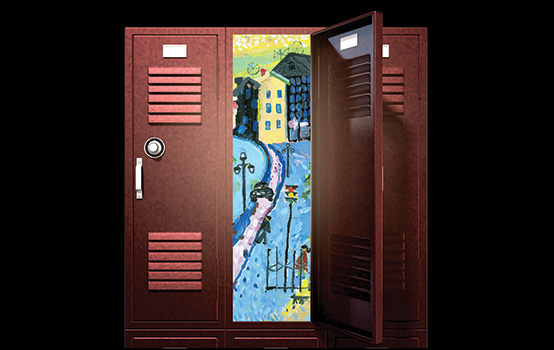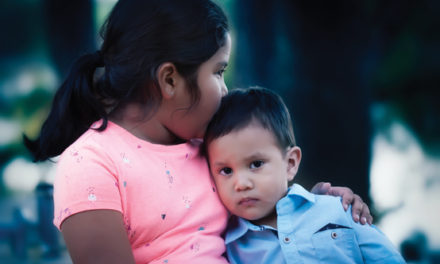
Successful partnerships require careful attention and oversight, but they can change both schools and their partners and offer new resources and opportunities to students.
Urban schools cannot exist as islands. Their overburdened district offices can’t supply enough support, and public funding can’t provide all the services students need. Partnerships with external organizations can fill some of these gaps and, done well, can make the difference between schools that offer the bare minimum and schools that offer extended courses, internships, mentoring, counseling, and other enriched experiences.
Through four decades of working in urban schools, I’ve experienced many partnerships with outside organizations, including those with a focus on health care, arts, science, or math education. The partnering organizations have been as diverse as universities, hospitals, corporations, cultural institutions, community-based organizations, and museums. The best became true collaborations. My criteria for an excellent collaboration are simple: Both partners must achieve a new and different outcome, and each partner must somehow be changed. When a partnership becomes a collaboration, results can be dazzling. Students, their families, and the partners benefit enormously.
Questions to ask
Overworked school principals are tempted to sign up for every partnership offered. One nonprofit wants to offer after-school sports, another proposes integrating architecture into the math curriculum, and another offers to help students develop self-advocacy and peer mentoring skills. Taken individually, each sounds terrific, yet success comes with careful attention and oversight before the initiative rolls out. Examples of good initial questions include:
- Are the expectations of the partnership in writing?
- Do personnel from the collaborating organization have experience working in a school culture?
- At what level of each organization are personnel involved?
- Does a small, autonomous department or department head drive the partnership, or does commitment come from every level of the organization?
- If students and faculty are onsite at the partnering institution, what’s the process for ensuring that they understand how to function in that environment?
- How are the expectations of the partnership communicated, reviewed, and evaluated?
- Will the partnership continue if funding disappears?
- Is this a short-lived or long-term partnership, and is there a possibility that it will lead to a true collaboration where both organizations may be changed from the experience?
I often warn school leaders about letting schools become Christmas trees with so many ornaments (programs) that the branches sag and the trunk leans precariously. Schools cannot be successful when every new program is an add-on. Urban schools with limited resources need healthy partnerships to be vibrant institutions of promise for students.
A partnership in health care
When I worked at Fenway High School in Boston in the early 1980s, we were part of the emerging school-to-career movement, and we were fortunate to be near Children’s Hospital. Our school-to-work program with Children’s Hospital began after a hospital vice-president met with us. “Every day, I see your kids taking shortcuts through the hospital’s passageways or eating in the various food courts, and I also see how afraid so many of our personnel look when they see your kids. They’re loud, they carry boom boxes, and they seem to absolutely ignore everyone else on the street. I wonder if we could start a program together.” That bold statement started what would become an award-winning and nationally recognized school-to-career program.
Successful partnerships are created when there is careful attention and oversight before the initiative rolls out.
At its most successful, more than 40 juniors and seniors worked in various hospital departments, including human resources, phlebotomy, computer technology, nutrition and food services, and even patient services. About 40 hospital employees mentored Fenway students. An entire hospital administrative team (whose department head reported to the president) advocated for our students, our faculty, and our school. The initial funding for the partnership came from a little-known city program that encouraged nonprofits, in lieu of taxes, to contribute back to the city.
The Children’s Hospital Collab program grew from these mutual assumptions: The hospital needed workers, Fenway students were desperately poor and needed jobs, and their track record for staying in jobs was spotty. So while the collab program fulfilled a real need on both sides, the partnership committed to much more. Human resources employees worked alongside teachers to develop a job-readiness curriculum, a mentoring curriculum, and a conflict resolution curriculum.
The “house” model
The Collab program was so successful that partnerships became a defining feature at Fenway, and a “house” model emerged. Students could be in the Children’s Collab House, the CVS Pharmacies’ House, or the Museum House. Each house of about 80 students developed its own character, guiding principles, and expectations based on the work and profile of the partnering organization. Work and internships formed the backbone of all three houses. We wanted students to learn and live within another culture — a professional nonschool culture so they would begin to develop aspirations for life after high school. Partners also provided workshops for family members on resume writing, job skills, and even financial planning for college. Each partnership provided mentors or adults who took an active interest in students’ academic work and school life, even coming to school exhibitions and other school-related events.
A school molded by partnerships
Fenway grew and developed into a successful, nationally recognized, urban high school in large part because of its stable partnerships. One of the most influential partnerships brought Fenway to the campus of Bunker Hill Community College. Fenway built a new building on the college campus so students had access to dual-enrollment courses. The college benefitted from being part of an emerging national movement of middle colleges, which allow students to earn college credit while attending high school. Fenway students became better prepared to enter the community college as freshmen. The college president was a visionary who insisted that employees at every level support this evolving partnership. After her tenure ended, we realized that students were much less welcome on the campus and that the college wanted to access our building during the day as well as the evening. After an eight-year partnership, Fenway had to move on. Neither the Children’s Hospital nor CVS Pharmacy program exist today nor is Fenway a middle college, but the museum program still plays a role in the school’s life.
From the Fenway experience, I learned that a partnership can change a school’s student population. In the early days of the Children’s Hospital Collab, students were some of the most disenfranchised in the city. The hospital needed entry-level workers, and Fenway students needed job skills, employment, stability, and a high school education. As the job market required more highly skilled workers, Fenway’s student body began to reflect those changes. For the CVS prep pharmacy program to be successful, Fenway had to recruit students with the staying power, academic skills, and grit to pass increasingly more demanding science courses. Over time, the Fenway population shifted from the most disenfranchised and low-skilled students to students who started off with better preparation and more skills and would be more likely to benefit from a more rigorous college prep environment.
Fenway’s student population today is dramatically different from the 1980s. Still, the six-week internship program that grew out of the Children’s Collab exists today, with many of the same tenets and goals. And all Fenway students take a course on entrepreneurship with ideas that emerged from the work with CVS Pharmacies. In fact, the Ventures Program, as it is now called, is core to Fenway’s curriculum.
Through each partnership, Fenway learned deeply how to engage students and experimented with different kinds of curriculum, particularly in the sciences. Fenway continues to be a leader in urban public education with a reputation of embracing change.
The BAA collaboration
The Boston Arts Academy (BAA) was born from a partnership of six colleges of the arts — five private and one public — the City of Boston, the Boston Public Schools, and countless parents and caregivers determined to give Boston its own public arts high school. In 1993, the presidents of the six member schools in the ProArts Consortium (Massachusetts College of Art and Design, Emerson College, the Boston Conservatory, Berklee College of Music, School of the Museum of Fine Arts, and the Boston Architectural College) joined to write a proposal for a new high school for the visual and performing arts.
The consortium hired me to be founding headmaster at this new high school in 1998 My job was to manage collaborations in 11 key areas that included extensive involvement from all of the colleges, their faculties, students, and administration. The development of Boston Arts Academy (BAA) and the ProArts Consortium is a story about collaboration and partnerships. It wasn’t always easy.
Initially I was concerned about the membership of the BAA Governing Board. The consortium presidents had worked tirelessly to start BAA — some of them for over 15 years — and they didn’t like the idea of sharing power so soon with parents, community members, and students. They eventually conceded to one parent, one faculty member, and one community member, but a student representative was out of the question. This issue caused enormous friction in our first few years. At Fenway High School, I had worked hard to develop its board, including representatives from all sectors of the school and community. I couldn’t understand how a public school could have a board primarily of college presidents. Through intense dialogue, outside facilitation, union pressure, and the passage of time, BAA’s board grew to include four parents, four faculty members, the president of the student government, and multiple community members. Today, one president still sits on the board, as do two liaisons from the colleges and a retired consortium college president.
Although each consortium member contributed extensive in-kind support, there was no actual financial support. This was very difficult in the early years. In the first year of the school, I persuaded the consortium to make a two-year commitment so I could hire a grant writer/fund-raiser/public relations person. This gesture was key to helping BAA become financially stable.
The role of the liaison
The most significant and long-standing part of our partnership was the role of the consortium liaisons to BAA. Each college president assigned a faculty or staff member to this team who worked with me to develop partnership activities and to monitor and evaluate their efficacy and success. The team and presidents helped develop curriculum standards and outcomes in the arts. They rolled up their sleeves and helped establish expectations for auditioning students. Given that over 600 students audition for only 125 spots, the colleges’ involvement is critical to the fair and open perception of this process. Most important, the liaisons provided feedback on how students did after they matriculated into the arts colleges. In essence, the liaisons formed our first “external review” committee and both validated and helped fine-tune much of our work.
From the beginning, we looked at college retention. A joint task force discovered that this issue involved how we had prepared students and something about the college program of study. We learned that we each could implement changes that would strengthen both institutions. This was true collaboration.
Partners as advocates and activists
Berklee and The Boston Conservatory were immensely generous with space for performances and concerts. Their students gave lessons through federal work-study funds. However, we knew we needed to prepare students earlier to be successful musicians since the Boston Public Schools had no feeder programs in elementary or middle schools. Recognizing this lack, Berklee began CityMusic, a Saturday music program at Boston Arts Academy for students in grades 4-8 that employed our music director as its director and a number of adjuncts from our faculty. CityMusic became part of a national outreach initiative in Berklee’s fund-raising, so they weren’t just being altruistic. It was part of their strategic plan.
We limped along for eight years with just a few classical music string players, until we finally received private funding to start a feeder program in three middle and elementary schools. Slowly, we began to increase the number of violins, violas, and cellos at the school. We have yet to realize ideal cross-instructional support. Students (and faculty) certainly take courses at the colleges, but we haven’t been able to get programs approved where college faculty would teach an entire course to high school students. I know it’s coming in the future!
The best kind of partnership occurs when both partners embrace changes and the changes improve both institutions; this is also the best kind of collaboration.
Support from librarians has been extensive as has the support of college admission and financial aid personnel. Consortium personnel attend our open house every year to meet parents and describe their own schools. Well over 150 BAA students have gone on to consortium colleges, and at least 80 have received degrees. But lack of financial aid for students continues to be a serious impediment that keeps more from enrolling in college.
The colleges send us student teachers, which helps with class size, brings new perspectives in arts education, and connects us to the newest research. We have, of course, been part of myriad research projects for the colleges (and other local researchers), and we take our role as a beacon for arts education seriously. The best kind of partnership is when both partners embrace changes and the changes improve both institutions; this is also the best kind of collaboration. Tensions have been inevitable in our long collaboration with the consortium, although the successes have overridden any disappointments.
Preservice partnerships
Tufts University has been another long-standing partner institution for BAA. Together, faculty and staff at Tufts and in the Boston Public Schools developed one of the most successful teacher education programs in the country — the Urban Teacher Training Corps (UTTC), where students are with us for the entire year.
The UTTC interns are chosen by Tufts and BAA together. BAA makes the final selections, and the interns spend all day at the school before heading back to Tufts for classes late in the afternoon. The Tufts interns experience a full year at the school, get to know their students well, and are very well-prepared to become full-time teachers the next year. Indeed, many of them are hired at BAA.
Some partnerships end
Sometimes, partnerships have a shorter shelf life, which encourages the question about how they were built from the beginning. The Tufts partnership clearly benefits both sides and has been willing to adapt to meet changing needs of both partners. BAA’s partnership with Boston Symphony Orchestra (BSO) has taken a different turn. Even before the first BAA students arrived, the BSO called with an idea that included opening BSO’s Education Resource Center in the school library. This terrific plan came with a part-time librarian, a budget to buy art, music books and materials, and, most important, the commitment to pay for keeping the library (and thus the building) open on Saturdays for BSO education workshops. About four years into the partnership, the American Association of School Librarians honored us with a prestigious award for running such high-quality programs. Unfortunately, that robust partnership ended after 14 years as the result of tight economic times.
Sustaining partnerships
Both partner organizations must believe in the mission. They must be clear about goals and committed to what each institution hopes to accomplish individually and to what the partnership hopes to accomplish together. These goals and desires may change over time, so there must be a mechanism to review, adjust, and discuss. The Children’s Collab began with small goals about workforce development and jobs and then expanded to mentoring, high school completion, and even school reform. We couldn’t have known all that in the beginning. Our relationship, which changed both institutions and the individuals involved, helped us articulate such large purposes and goals.
When the ProArts Consortium founded BAA, the presidents initially wanted to establish an exam school for the arts where the best graduates would easily matriculate into their colleges. While many alumni have gone on to consortium schools, BAA has become a leader in arts education and education reform and with a very different student body than the consortium originally envisioned. BAA is not an exam school for the arts. In fact, no academic entrance requirements exist. Over 15% of our students are special education students, and over 65% are eligible for free and reduced lunch. Nearly 95% of each graduating class attends two- and four-year colleges. BAA’s student population reflects the racial, linguistic, and socioeconomic diversity of the school system. We could easily attract only students with years of arts training, but our goals are much broader. We aim the arts to engage students who will achieve at high artistic and academic levels but who haven’t had previous advantages in either arts or academics. Through mutual respect and dialogue, the ProArts Consortium presidents began to broaden their vision of a successful BAA graduate. The success of the ProArts-BAA partnership is deeply rooted in both institutions’ commitment to collaboration and to mutual change and benefit.
An outlook
As I continue to think about the fertile areas of partnerships and collaborations, I’m intrigued by schools working alongside businesses, nonprofits, farms, and myriad other organizations in order to raise student achievement. I would like to see other true college-school collaborations. Part of the solution to global problems like climate change can come from school-research partnerships. I envision a school that sets out to teach students about food justice, environmental justice, and being healthy members of society alongside other organizations doing the same thing. What if a laboratory or a research institution were inside a school and vice versa? I see a school for emerging leaders operating inside a state legislature, with students serving on state committees, doing research for politicians, and generally being steeped in the practices of a civil society. I look forward to schools in museums or museums and galleries in schools that can be sustained over time, schools on sailboats that partner with the Coast Guard, schools on farms that engage students in food production and farming. One way to ensure the stability of these schools is to explore how partnerships can become collaborations where both organizations grow, change, and find mutual benefits and success over time. We know how to do this. We just have to believe that we can.
CITATION: Nathan, L. (2015). The art of the school-community partnership. Phi Delta Kappan, 96 (8), 57-63.
ABOUT THE AUTHOR

Linda F. Nathan
Linda F. Nathan is the co-director of Perrone Sizer Institute for Creative Leadership at Hale Education, Westwood, MA. Her most recent book is When Grit Isn’t Enough .










